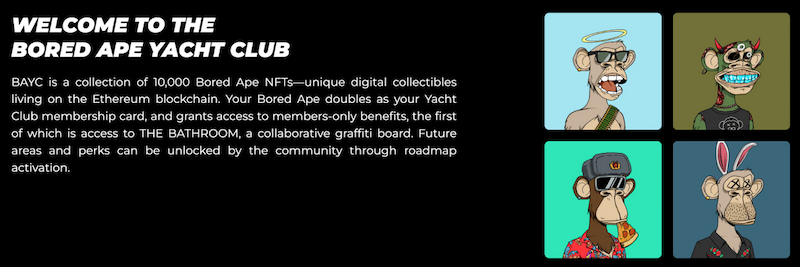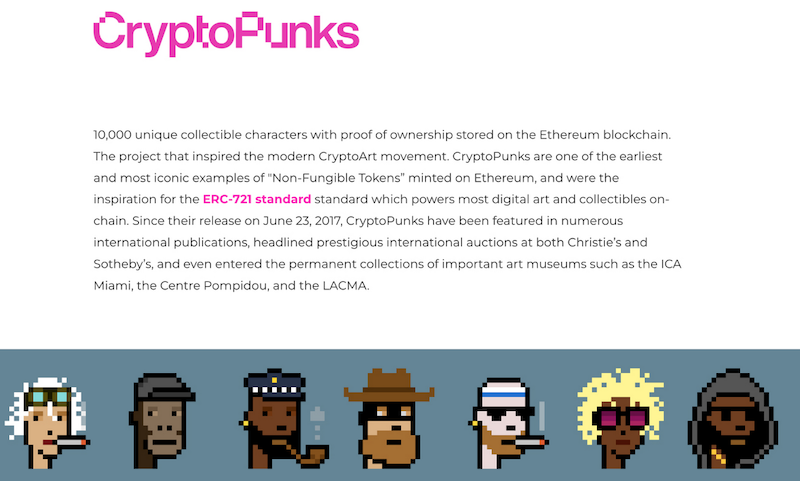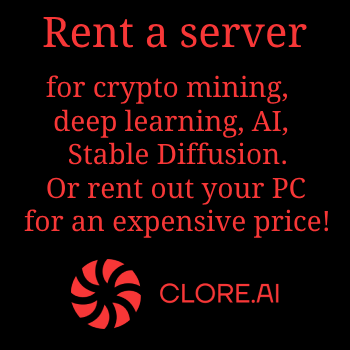 Non-fungible tokens (NFTs) are one of the most dynamic phenomena in the digital economy, evolving since their emergence in 2014 into a multi-billion-dollar market. If in 2021 the total NFT capitalization reached $16 billion, analysts predict explosive growth to $210 billion by 2030. Unlike classic coins like Bitcoin (BTC) or Ethereum (ETH), which can be divided into parts and exchanged one-for-one, each NFT is a completely unique asset with its own history, value, and impossibility of direct replacement.
Non-fungible tokens (NFTs) are one of the most dynamic phenomena in the digital economy, evolving since their emergence in 2014 into a multi-billion-dollar market. If in 2021 the total NFT capitalization reached $16 billion, analysts predict explosive growth to $210 billion by 2030. Unlike classic coins like Bitcoin (BTC) or Ethereum (ETH), which can be divided into parts and exchanged one-for-one, each NFT is a completely unique asset with its own history, value, and impossibility of direct replacement.
Today, NFTs have gone far beyond simple images: they prove ownership of real and virtual objects, open new revenue streams for creators, and integrate into fashion, gaming, music, and even real estate. In this article, we'll break down what NFTs really are, how they work, what they're used for, and which types of tokens dominate the market right now. This material is prepared especially for those just entering the Web3 world and wanting to understand why NFTs continue to change the rules of the game in 2025.
What Are NFTs and Why Are They Unique?
An NFT is a digital certificate of ownership recorded on the blockchain. Imagine a passport for a unique item: it confirms that you own this asset, and no one can forge the record. Thanks to smart contracts (automatic programs on the blockchain), the token cannot be divided, copied, or exchanged for an identical one—each unit has its own identifier and metadata.
When you buy an NFT, you're acquiring not just a file, but proof of authenticity and provenance. It could be a digital painting, a track, a virtual plot of land, or even a tweet. The main advantage is the absence of intermediaries: an artist sells their work directly to a collector, and the buyer instantly receives rights via their wallet.
The environmental issue that once cast doubt on the future of NFTs is practically resolved today. After Ethereum's transition to Proof-of-Stake in 2022, the network's energy consumption dropped by 99.95%, and new blockchains like Solana, Polygon, and Tezos make minting (creating) tokens even greener and cheaper.
How Do NFTs Work Under the Hood?
Everything is built on the blockchain—a distributed database where every transaction is transparent and immutable. NFTs are created using standards like ERC-721 or ERC-1155 on Ethereum and similar ones on other networks. Smart contracts allow programming additional features: for example, the author automatically receives 5–15% royalties on every resale of their token (NFT 2.0).
The creation process is simple: upload a file (image, video, 3D model) to a platform like OpenSea, Rarible, or Blur, pay the gas fee (network commission)—and the NFT is ready. The buyer sees the entire ownership chain: from the first mint to the current owner. Even if someone takes a screenshot, the original remains with you—like the Mona Lisa in the Louvre.
A famous example is Jack Dorsey's first tweet, sold in 2021 for $2.9 million. In 2025, such "digital relics" continue to break records: collectors pay millions for memes, historical posts, and even virtual sneakers.
Where Are NFTs Used in Real Life?
NFTs have ceased to be a speculative bubble (as they were at the very beginning due to excessive hype, when every second person tried to incorporate NFTs into their project without much reason just to ride the trend) and have turned into a working tool. Artists earn millions without galleries, musicians sell albums with exclusive rights, brands release digital clothing for metaverses. Charity is also involved: in 2024–2025, projects like UNICEF and WWF raised tens of millions through limited-edition tokens.
But the main thing is utility. NFTs provide access to closed communities, discounts, events, and even a share of project profits. The token owner is not just a spectator, but a participant in the ecosystem.
Main Types of NFTs in 2025
Practically any object can be tokenized. Here are the most in-demand categories that bring real benefits and income.
- Art and Collectible NFTs. The classics of the genre. Digital paintings, animations, 3D sculptures. Leaders include Bored Ape Yacht Club (BAYC), CryptoPunks, Pudgy Penguins, and new projects like Azuki or Moonbirds. The most expensive Bored Ape #8817 sold in 2021 for $3.4 million, but in 2025, top tokens from blue-chip collections trade above 100 ETH.

- Generative Art. Tokens created by algorithms and AI. Each unit is unique due to random combinations of traits. Classics include CryptoPunks (10,000 pixel punks) and Art Blocks. In 2025, generative collections integrate neural networks like Midjourney v6 and Stable Diffusion 3, creating truly endless variations.

- Gaming NFTs (GameFi and P2E 2.0). Games where you earn just by playing. Axie Infinity, The Sandbox, Illuvium, Parallel—here tokens represent characters, weapons, land. In 2025, the focus has shifted from "play-to-earn" to "play-and-earn": projects like Star Atlas and Otherside offer complex economies where NFTs generate passive income through staking and renting.
- PFP (Profile Picture) NFTs. Avatars for social networks and metaverses. Millions of users on Twitter (X), Discord, and Telegram use BAYC, Punks, or Cool Cats instead of regular photos. Owners get access to private chats, airdrops, and merch. In 2025, top PFP projects launch their own L2 networks for zero fees.
- Fashion NFTs. Digital clothing and accessories. Nike (via .SWOOSH), Adidas, Dolce & Gabbana, Gucci release collections for Decentraland, The Sandbox, and Spatial. In 2025, fashion NFTs integrate with AR: wear virtual RTFKT sneakers in Instagram filters or on a real avatar in Apple Vision Pro.
- Event Tickets as NFTs. Goodbye, Ticketmaster with its markups! Coachella, UEFA, Formula 1 mint tickets on the blockchain. After the concert, the token turns into a collectible with backstage videos and autographs. Resales are transparent, fakes impossible, and organizers get a cut of every deal.
- Domain Name NFTs. ENS (Ethereum Name Service), Unstoppable Domains, Bonfida on Solana. Instead of 0x123...abc, you have vasya.eth or crypto.sol. In 2025, domains have become universal logins: one address for all wallets, games, and social networks.
- Virtual Real Estate. Land in metaverses—the fastest-growing segment. Decentraland, The Sandbox, Otherside from Yuga Labs. A plot next to Snoop Dogg in Sandbox costs millions. Companies build virtual offices, stores, casinos. In 2025, integration with VR and Apple Vision Pro makes virtual land a real business.
- Music NFTs. Platforms like Sound Protocol, Audius, Royal.io. Musicians sell tracks with royalty shares: buy the token—get a percentage from every stream. Kings of Leon, Snoop Dogg, Grimes earned millions. In 2025, NFT albums include exclusive metaverse concerts and voting on the next release.
- Content and Publishing NFTs. Journalists tokenize articles (Mirror.xyz), writers—books (Book.io). Readers buy not a subscription, but a share in the content: if the material takes off, the token rises in price.
The Future of NFTs: From Real-World Tokenization to DeFi 2.0
In 2025, we're seeing true asset tokenization (RWA - Real World Assets). Real estate, stocks, patents, carbon credits—everything becomes NFTs. BlackRock and Fidelity launch tokenized funds on Ethereum. Regulatory issues are being resolved: the EU with MiCA, the US with new bills provide clarity.
Interoperability is growing thanks to LayerZero and Chainlink's CCIP: your NFT from Solana easily transfers to Polygon or Base. Ecosystems like Ordinals on Bitcoin and Runes open new horizons.
Conclusion: Why Pay Attention to NFTs Right Now?
NFTs are not the 2021 hype, but a fundamental technology that returns control to creators and collectors. In 2025, the market is recovering after the bear market: trading volumes on OpenSea and Blur are up 300% year-over-year, new projects offer real utility, and institutions like JPMorgan and Goldman Sachs launch their own NFT platforms.
If you're an artist, gamer, musician, or just an investor—now is the perfect time to get in. Start with a MetaMask wallet, explore Blur or Magic Eden. NFTs are not just pictures. They are the future of ownership in the digital world.
Subscribe to our Telegram channel.









